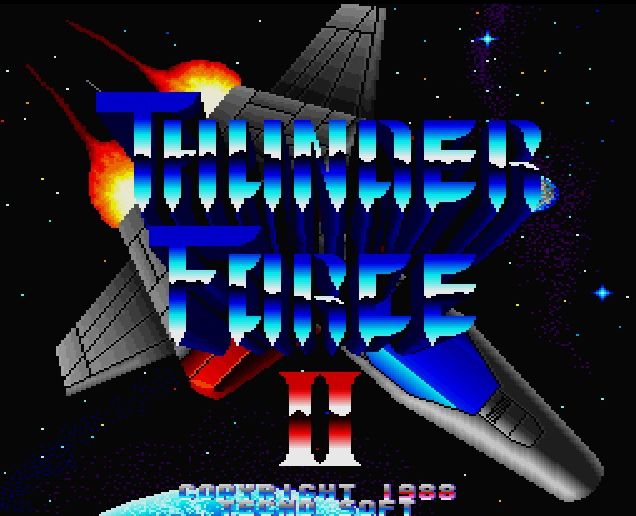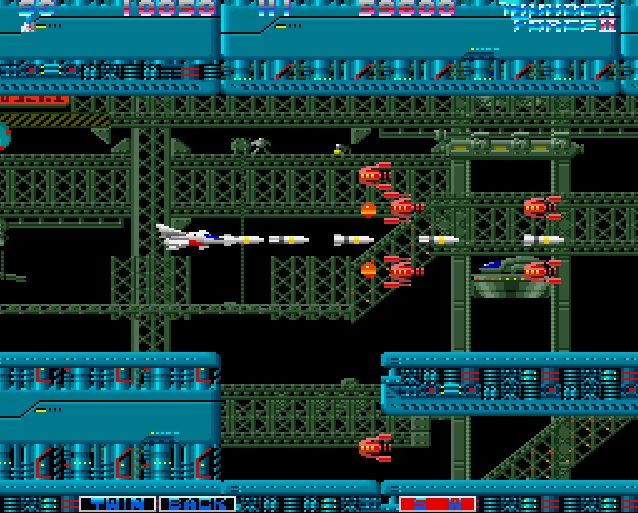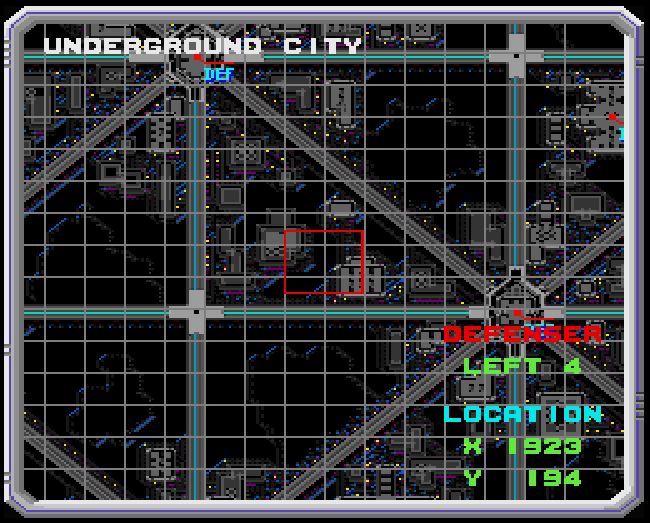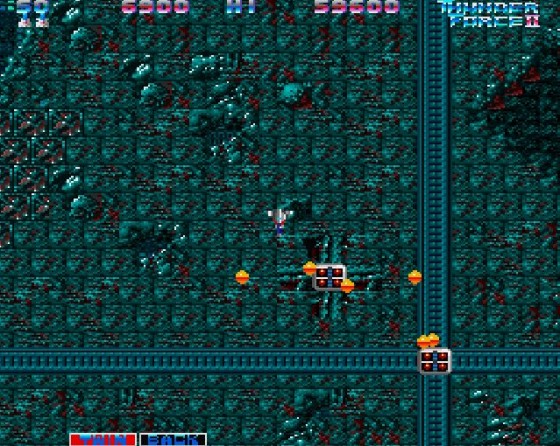Well, this is embarrassing. Normally I like to beat a game a couple times or so before writing an article on it. Sometimes that doesn’t happen. I have thousands of excuses. I wasn’t in the zone. I didn’t have the time to bash my head against it until I saw credits. The game cheated. The controller wasn’t listening. Ghosts. Yeah, let’s blame ghosts this time. Anyway, I attempted to beat, but failed miserably, one fantastic shooter from 1988: Thunder Force II for the Sharp X68000.

Interestinly enough, the narrator calls it Thunder Force: Mission II.
In my defense the X68000 version of Thunder Force II is significantly harder than the Genesis version that I can beat in my sleep. Enemies seem to take more hits, they send out more shots, and there just seems to be more stuff going on. I guess the ORN Empire got lazy in the following year. Budget cuts, maybe? Who knows. All I know is, this game curses for you when you lose.
Thunder Force II was the first Genesis game I owned, mostly because I had found it cheap before I had a Genesis and figured I may as well grab it. This was back when Genesis games were about $60-$70 a pop, so it wasn’t something that I wanted to pass up. I knew I’d get a Genesis eventually. Altered Beast was fun and all, but you need other games to play from time to time. For me, there’s a lot of nostalgia tied to Thunder Force II. When I found out there was another version of it, of course I had to check it out.
If you’ve never played Thunder Force II before, it’s a bit different from the rest of the series. There’s two types of stages; overhead and side scrolling. The game alternates between the two types, starting with the top down stages. The side scrolling stages are similar to what you see with the rest of the series. You navigate your ship through a corridor with anything and everything trying to kill you. You grab some weapons along the way, fight a boss, and you’re done.
 The sidewinder is one of the exclusive weapons. I still died.
The sidewinder is one of the exclusive weapons. I still died.
It’s the top down stages that make this one different. These stages are free roaming, meaning you can go off in whatever direction you need to. You have to destroy a set number of bases in order to beat the stage. In the X68000 version, you get a map that helps show where they are, which I always thought would have helped in the Genesis version. Enemies come at you in all directions, and there’s obstacles as well. It sounds simple but things get dicey when you find yourself caught in small spaces because you can’t slow down or stop moving. Of course, you get power-ups as well, none of which will carry over to the side scrolling stages.
The control is pretty tight, despite the fact that there’s no way to speed up or slow down in either the top down or side scrolling stages. Some of the weapons, particularly the ones exclusive to the X68000 version are a bit strange to control. The hit boxes seem a bit unfair at times. You need to be very direct with your shots. You may have to configure the X68000 version before hand, as auto fire is off by default.

At least the X68000 version throws you a bone by giving you a map.
The music, much like all of the Thunder Force games aside from the very first, is amazing. There’s not much more to say than that. This is the game where the legacy of Thunder Force’s soundtracks started. I don’t think the X68000 version has any better music than the Genesis version. From what I understand, the X68000 and Genesis used similar FM sound chips. In the X68000 version, there are more sound effects and clearer audio samples. Some of them are still hard to make out, but at least they sound more like voices instead of inaudible banter. Although, it’s clear as day when the game yells “shit” when you lose your last ship.
The Genesis touted itself as being an arcade machine at home when it came out. The games on Genesis never looked arcade perfect, but they were great renditions for the time. With that said, the X68000 was known for it’s nearly arcade perfect ports and was used as a development kit for CPS games. While the X68000 version isn’t a whole lot better looking than the Genesis version, I’d like to think it looks like what Thunder Force II would have looked like if it were an arcade game. There’s a bit more detail than the Genesis version, more layers of parallax, and more going on at one time. Some of the sprites look different, like your ship, but there’s not a whole lot of difference.

“The dump” is one of the stages left on the cutting room floor for the Genesis version.
Thunder Force II is a great game, regardless of which system you play it on. Unfortunately, the X68000 version hadn’t appeared on anything else. The Genesis/Mega Drive version showed up on Thunder Force Gold Pack Vol 1 on the Saturn, along with Thunder Force III, but hasn’t shown up on anything else. The series hasn’t been entirely forgotten, as Thunder Force VI was released in 2008 for PlayStation 2. There’s an unfortunate lack of the series as a whole on virtual consoles. Fortunately you can buy the Genesis version for pocket change.
Don’t forget the past! Great games needs to be remembered. Questions? Comments? Drop a line below or reach out to me on Twitter or Facebook.


